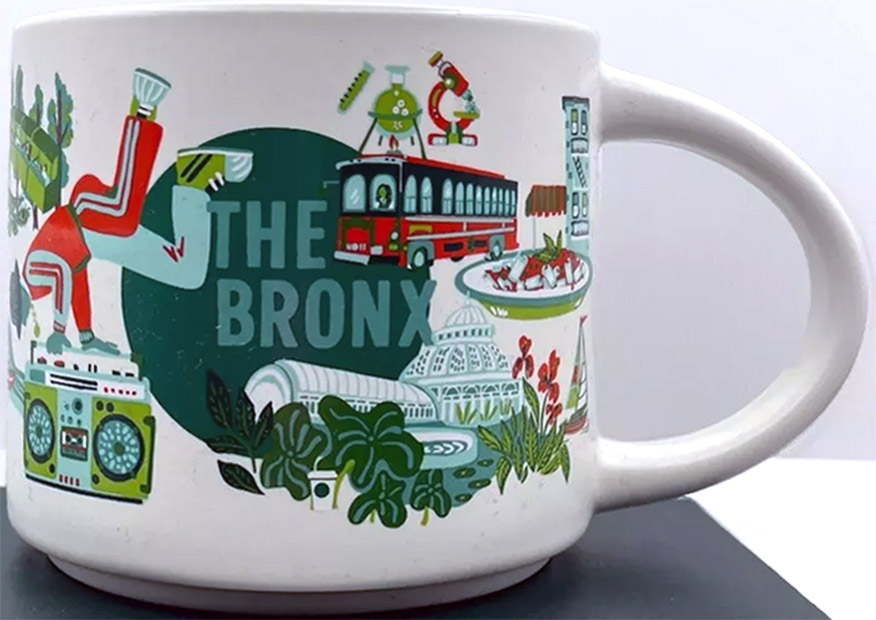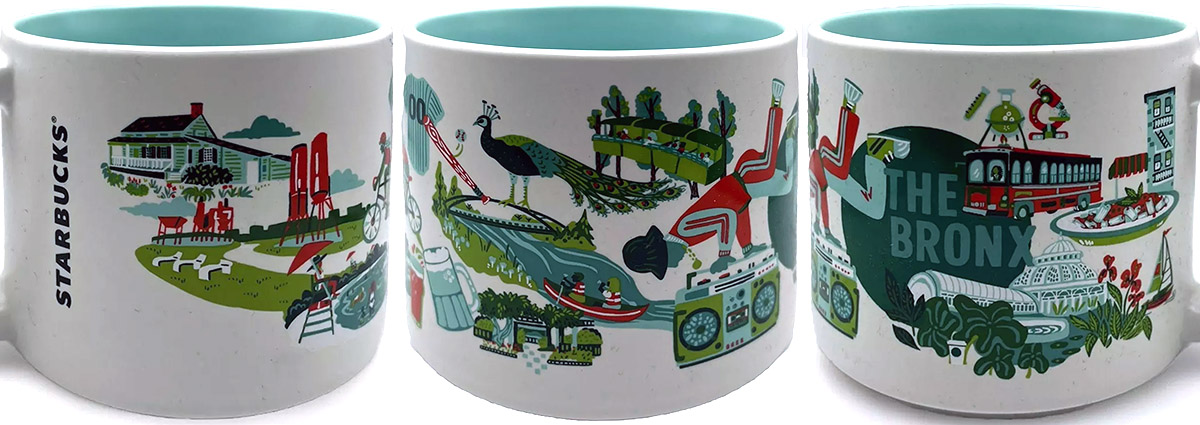
Discovery Series – The Bronx
Discovery Series The Bronx is a mug for the only New York City borough that is part of the United States mainland.
The Bronx was named after Jonas Bronck, a Swedish sea captain who settled in the area in 1639. Throughout the 17th and 18th centuries, the region remained largely rural, dotted with farms and estates owned by prominent New York families. The borough underwent a massive transformation in the late 19th century with the arrival of elevated trains and subway lines, spurring rapid urbanization and population growth. By the mid-20th century, the Bronx faced significant challenges, including urban decay and social issues, but has since experienced remarkable revitalization, emerging as a vibrant cultural center.
Here are some symbols and places to visit when in the Bronx:
– The Bronx holds an unparalleled place in music history as the birthplace of hip-hop, with 1520 Sedgwick Avenue recognized as the location where DJ Kool Herc first developed break-beating in 1973. The borough’s rich musical heritage extends beyond hip-hop, having produced influential artists across multiple genres, from jazz legends to Latin music pioneers. Venues like the Lehman Center for the Performing Arts continue to showcase the borough’s vibrant musical tradition, hosting performances that reflect the area’s diverse cultural landscape.
– The New York Botanical Garden, established in 1891, spans 250 acres and stands as one of the world’s premier botanical research institutions. Its Victorian-style Enid A. Haupt Conservatory houses an impressive collection of tropical and desert plants, serving as a living museum that attracts botanists and nature enthusiasts from around the globe. The garden’s Peggy Rockefeller Rose Garden and the Native Plant Garden showcase the institution’s commitment to both exotic and indigenous flora while providing an urban oasis for millions of visitors annually.
– The Bronx Zoo, opened in 1899, represents America’s largest urban zoo, spanning 265 acres and housing over 4,000 animals from more than 650 species. The zoo’s Congo Gorilla Forest and Tiger Mountain exhibits stand as prime examples of its commitment to conservation and education, offering visitors immersive experiences with endangered species.
– Known as “The House That Ruth Built,” the original Yankee Stadium opened its doors in 1923, while the new stadium, completed in 2009, carries forward the legendary legacy of the New York Yankees. The stadium serves as more than just a baseball venue; it’s a monument to American sports history, having hosted 27 World Series championships and countless memorable moments in baseball history. Beyond baseball, the stadium functions as a cultural landmark, hosting significant events and standing as a symbol of the Bronx’s resilience and pride.
– Arthur Avenue, often called the “Real Little Italy” of New York, represents a thriving Italian-American community that has maintained its cultural authenticity since the early 20th century. The neighborhood’s indoor retail market, established in 1940, continues to house family-operated businesses offering traditional Italian delicacies, from fresh mozzarella to hand-rolled cigars. The area’s restaurants, bakeries, and specialty shops create an authentic Italian atmosphere that draws food enthusiasts from across the region, preserving a vital piece of the Bronx’s immigrant heritage.








































































